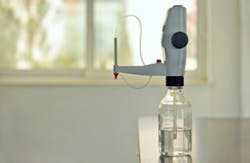BIRMINGHAM — In the article, “The who, what, when, where and why of well water testing,” featured in a previous issue of Water Technology, we discuss the importance of testing water, who should perform the test and when to do it — specifically pertaining to water wells.
New technologies are being developed, allowing for easier in-home water testing. In the article an expert provides the following tips for testing water regarding these innovative tools:
- Using a handheld instrument is great for easy spot-testing with instant results.
- Handheld equipment also comes in handy when in the field as a single meter can be used for multiple locations.
- A total dissolved solids (TDS) meter first tests electrical conductivity (EC) and then converts the EC to the best estimate of TDS.
- This type of device incorporates three non-linear conversion factor options for the best possible measurements.
- Frequent resting, particularly of the TDS levels, will determine if and when a filter or membrane needs to be changed, ensuring optimum performance.
You can find the entire feature on why you should test water, who should perform the test and when to do it, particularly in regards to well water, here.
About the Author
Sign up for our eNewsletters
Get the latest news and updates
